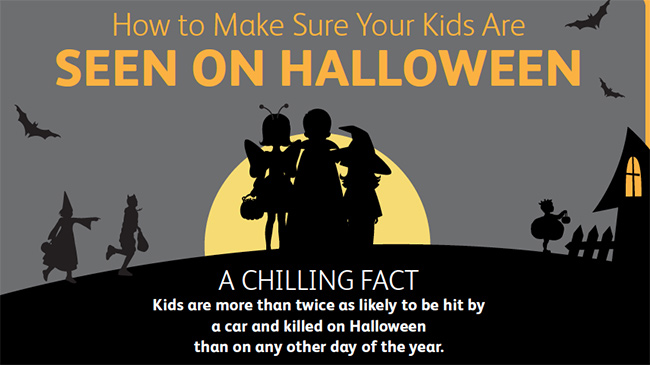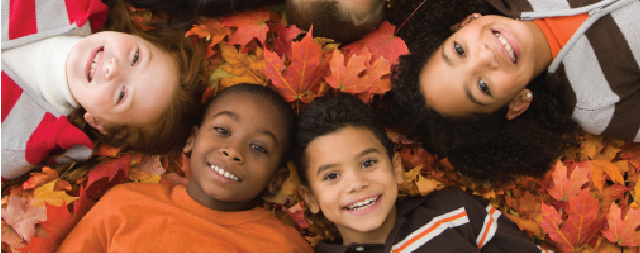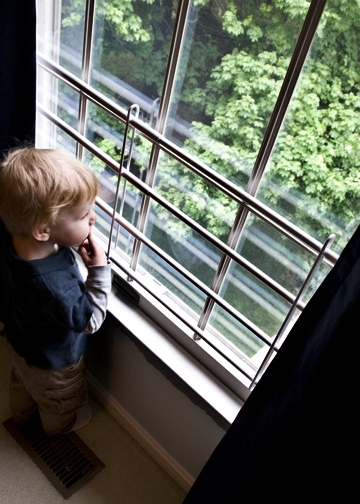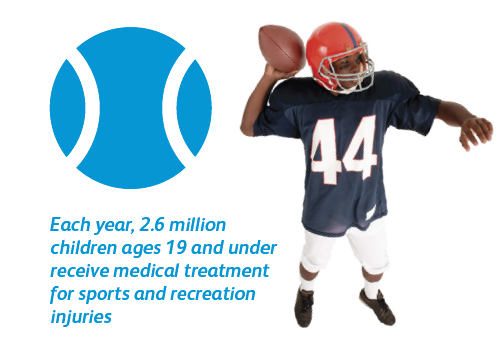Many thanks to our new corporate partner and event sponsor, AAA!![AAALogo_Large]()
The Safe Kids Georgia Leadership Conference is a wonderful opportunity to bring together our 30+ coalition coordinators and their guests from around the state to provide training/education and idea sharing. This year’s event, “Leaders in Prevention” was a tremendous success with over 60 attendees and a spectacular line-up of speakers and panelists.
The conference hosted a total of 18 speakers broken out in 7 sessions. Session topics covered volunteer recruitment, distracted driving, Safe Kids Worldwide updates, reporting technology and best practices, car seat safety and succession planning.
The venue for this year’s conference was the Atlanta Marriott Buckhead Hotel Conference Center. The event staff was most helpful to our group, attendees enjoyed all the snacks and raved about the accommodations.
We thought breaking it down into a four part series would be the best way to share all the amazing takeaways. This first part is a general summary, and forthcoming posts will include distracted driving, volunteer recruitment and retention then succession planning to close it out. Please feel free to comment or email us with questions!
![groupphoto]()
2016 Speakers – Leaders in Prevention
Felix L. Verdigets, Ph.D. {Welcome}
Director, KPMG LLP
Dr. Verdigets serves as a Director in KPMG LLP, Management Consulting practice. His expertise centers on assisting clients with change management concerns in order to mitigate risk and attain sustainable benefits. As Director, he is responsible for leading the People and Change service line for the Southeast covering the Carolinas, Tennessee, Mississippi, Alabama, Georgia and Florida. Prior to this role, he held senior positions in the Disputes, Risk and Change Management areas at Navigant Consulting and Charles River Associates; two global professional services firms. He possesses significant C-level experience in workforce transformation. In addition to large transformation projects, his experience also includes addressing change management, organizational development, talent management, communications, and culture and employee engagement. He has served as Chairman of the Safe Kids Georgia Board of Directors for 3 years.
Steve Greenfield {Getting to Know You}
Founder/ CEO of Automotive Ventures, LLC
Mr. Greenfield is the Founder and CEO of Automotive Ventures, LLC a start-up in Atlanta, Georgia, focused on incubating and growing businesses that solve huge pain points in the automotive industry. Prior to running his own business, he was employed by AutoTrader.com as Vice President of Product Management and Business Development. Mr. Greenfield was responsible for the online user experiences on website and mobile devices, advertising products for automotive manufacturers and dealers, as well as their advertising management platform. He also managed AutoTrader.com’s initiatives that included the establishment and execution of their acquisition and partnership strategy. Before joining AutoTrader.com, he served as Manheim’s Director of International Development. His role was to develop opportunities for Manheim’s overseas investments, including new ventures in Dubai, Istanbul and Beijing. Additionally, he has served as a member of the Safe Kids Georgia Board of Directors for 8 years.
William B. O’Neal, Sr. {Crucial Conversations}
O’Neal Training & Development, LLC
Mr. O’Neal is the author of The Young Man & The Mentor: Discovering 5 Essentials for Developing Greatness. He is also a contributing author for the second edition of Nursing Management: Principles and Practice, a resource that provides an in-depth review of general and oncology nursing management principles to guide the practice and development of nurse managers involved with cancer care. He wrote the chapter on “Creating a Culture of Greatness” which outlines best practices on how leaders can develop a results oriented service environment that meets the needs of both internal and external customers. Mr. O’Neal is also a high impact speaker and trainer with an inspiring message that focuses on the significance of living a life of purpose and achieving greatness through service to others. Using his talents of speaking and behavioral training to inspire and develop organizational cultures where employees want to work, physicians want to practice, and patient families want to bring their love ones to have their healthcare needs met. With his unique blend of wisdom, humor, and enthusiasm, he consistently delivers presentations and training sessions that are inspirational, informational, and entertaining. His speeches are aimed at stimulating members of his audience to take action to develop their potential and unleash the greatness that is within.
Monica Garrett {All Hands on Deck – Volunteer & Recruitment}
Community Affairs Manager, LexisNexis
Currently the Director of Community Relations for LexisNexis Risk Solutions, Ms. Garrett has responsibility for the company’s philanthropic strategy, employee volunteer program, community partnerships and charitable contributions. She also manages Employee Resource Groups (ERGS), a Diversity & Inclusion initiative. ERGs are independent, voluntary networks of employees who share common interests. The groups help drive diversity initiatives, community involvement and promote career development through mentoring, workshops, leadership speakers and external networking.
Paige Pushkin {All Hands on Deck – Volunteer & Recruitment}
Senior Director, Corporate Development Boys and Girls Club
Ms. Pushkin has worked exclusively in the non-profit sector for the duration of her 20-year career. Currently, she is the Senior Director of Corporate Development for the Boys & Girls Clubs of Metro Atlanta. Her job is to raise corporate funds and provide oversight of the organization’s extensive volunteer program. In many roles prior to this position, she has been responsible for volunteer management, recognizing the values and significant contributions they bring to an organization.
Renate Dugans {All Hands on Deck – Volunteer & Recruitment}
Public Affairs Specialist, State Farm Insurance
As Public Affairs Specialist for State Farm Insurance Company, Ms. Dugans manages State Farm’s strategic philanthropic budget and program implementation for the State Farm Atlanta Hub and Metro Atlanta. This involves managing State Farm partnerships with non-profit organizations, schools and governmental entities.
Currently, she manages over thirty community partnerships. While collaborating with local State Farm agents, internal departments and external organizations, Ms. Dugans strives to help build stronger, safer and better educated communities.
Pamela Fair {All Hands on Deck – Volunteer & Recruitment}
Safe Kids Georgia Coalition Consultant
Ms. Fair has nearly 30 years’ experience working in Public Health with an emphasis on Injury Prevention, Public Information, Media Relations, Risk Communication and Environmental Health. Since Safe Kids Columbus inception in 1998, Ms. Fair has served in the role of Coalition Coordinator until her retirement in 2015. Her leadership acumen and ability to motivate and retain coalition members while performing the responsibilities of the Safe Kids Program, has been outstanding. She recently began working with Safe Kids Georgia as a Coalition Consultant.
Garrett Townsend {Don’t let your eyes veer of the road}
Director, Public Affairs AAA
Mr. Townsend manages Public Affairs and Media Relations for Auto Club Group. AAA Georgia focuses on issues such as Traffic Safety, Legislative Affairs, Driver Education and Travel. He joined AAA in 1996 and has served in a myriad of roles throughout the years, but most recently as Director of Public Affairs. Prior to coming to AAA, Mr. Townsend worked in management within the Airlines Industry.
Russell H. Henk, P.E. {Don’t let your eyes veer of the road}
Program Manager & Senior Research Engineer, Teens in the Driver’s Seat
Mr. Henk has been a member of Texas A&M Transportation Institute’s (TTI) staff for 28 years, a registered Professional Engineer in the State of Texas for 22 years, and currently serves as a Program Manager and Senior Research Engineer in TTI’s Center for Transportation Safety. During Mr. Henk’s career with TTI, he has supervised and/or participated in over 100 research projects and technical studies. These technical activities have primarily been focused on transportation system operations, management and safety, with most of his recent projects being in the area young driver safety. He developed and currently serves as Program Director for an innovative peer-to-peer teen driver safety program called Teens in the Driver Seat, which is a cornerstone of the Youth Transportation Safety Program at TTI. This program has reached over 750 high schools and 1 million teens in Texas. Since deployment of this nationally-recognized, award-winning program started in Texas, teen fatalities have decreased 68 percent. The program has reached 38 states across the nation and has been recognized as a national best practice for safety for the past eight years in a row.
Kenneth Bain {Don’t let your eyes veer of the road}
Program Director, Cinema Drive
Mr. Bain first became interested in supporting youth through special entertainment experiences in schools. By using the cinematographic tools, he learned many aspects of this business from his mentor; Ori Yardeni and developed expertise in conveying messages in a fun and interactive manner. He has spent the last several years disseminating innovative programming to many states such as North Carolina, California, Texas, Ohio, Georgia, and Idaho. In the last 3 years, the programs have supported youth in dealing with a range of challenging issues (e.g., drugs and alcohol, risky driving and entrepreneurship). Most recently, through his partnership with leaders from the Violence Prevention Initiative at Children’s HOP, he has focused attention on developing strategies to prevent peer bullying.
Sheel Pandya {Safe Kids Around the World}
Director of Global Network, Safe Kids Worldwide
Sheel Pandya has 15 years of experience working in domestic and international public health, health policy and health care law. She currently serves as the Director of the Global Network at Safe Kids Worldwide where she is responsible for providing professional expertise and technical assistance in establishing, growing and sustaining over 400 U.S. coalitions and more than 25 international partners across the globe. Prior to Safe Kids, Sheel served as the Associate Director of Public Policy at Friends of the Global Fight Against AIDS, Tuberculosis and Malaria where she led in the development of policy strategy plans and performed comprehensive research and analysis on key global health and Global Fund-related issues with the overarching goal of strengthening support for the Fund among U.S. policy makers, the Administration, and key advocacy partners. Sheel also previously worked at AARP for eight years, first as a policy research specialist, and later as an health care attorney. In the former role, she focused on Medicare and Medicaid policy; in the latter role, she prepared motions, legal memos and amicus curiae briefs on disability, prescription drugs, FDA preemption and drug patent issues. Sheel also served as a Technical Officer at the World Health Organization, where she focused on the development and execution of an international healthy aging advocacy campaign
Richard Douglass {Rock Star Reporting}
Safe Kids Georgia Board of Directors, Program Chair, IBM
Mr. Douglass is an industry consultant in the Analytics Business unit of IBM. He has over 30 years of consulting experience in supply chain, ecommerce, marketing and customer analytics and solutions in a wide variety of industries. This would include chemicals, electronics, automotive, consumer products and retail. Serving as a member on the Safe Kids Georgia Board of Directors for over 8 year and for the last five, as Program Chair, Mr. Douglas has provided metrics and reporting opportunities.
Rick Rose {Rock Star Reporting}
Senior Product Architect, TechBridge
Mr. Rose is a Senior Product Architect with TechBridge, a non-profit that drives community impact by bringing affordable technology & business expertise to other nonprofits at a reduced cost. Rick has 12 years of experience serving hundreds of non-profits throughout the United States on web solutions, and currently focuses on architecting and deploying solutions on the Salesforce.com platform.
Viva Price {Rock Star Reporting}
Injury Prevention Program manager/ Coalition Coordinator, Safe Kids Cobb
Ms. Price is the Injury Prevention Program Manager for Cobb and Douglas Public Health and Co-Coordinator for Safe Kids Cobb County Coalition. Viva was employed before this position by the Massachusetts Department of Public Health as the Greater Boston Region Care Coordinator for Children and Youth with Special Health Care Needs. When coming to Atlanta she embraced and served the community child abuse prevention initiative for Department of Family and Children Services for Cobb and Fulton Counties. After working in Social Services for 5 years, she was passionate about educating her community over preventing unintentional injuries rather than providing continuous interventions. Viva has worked in the field of Public Health for 5 years.
Andrea Pope {Protect your Precious Cargo}
Brand Manager, Graco Children’s Products
Ms. Pope is the new Brand Manager for Graco Booster seats, including Harness and Belt-Positioning Boosters. An employee for two years at Newell Rubbermaid she has previously served as an Associate Brand Manager on the Writing Activation team, working on Sharpie and Expo. Prior to joining Newell, Ms. Pope also served on the agency side; developing shopper marketing strategy and programs for Unilever and S.C. Johnson.
William Conway {Protect your Precious Cargo}
Principal Engineer- Car Seats, Graco Children’s Products
Mr. Conway is the Principal Product Development Engineer for Graco Children’s Products, a division of Newell Rubbermaid. Working in this capacity for 5 years, he has been responsible for part of engineering, developing, testing and launching numerous Graco car seats including the Contender 65, the Size4Me 65 and the Tubobooster with Safety Surround. Prior to working at Graco, he served similar roles in the medical device industry and consumer products industry.
Mary Bear Hughes {Leaving Your Legacy – Succession Planning}
Senior Consultant, Non-Profit Resource Center
Ms. Hughes’ consulting expertise includes executive succession planning, transition, and search, board development and governance, and organizational development. Her 30 years of experience includes consulting and operational roles in the private and nonprofit sectors including leadership as an Executive Director and a board chair. Mary speaks, writes and conducts workshops in her areas of expertise. Prior to joining the Georgia Center for Nonprofits in 2012, Mary was a principal of Bear, Corbett, Woodward & Moore, where she focused exclusively on nonprofit clients. Previously she was a partner with Heidrick & Struggles International, a global executive search firm where Mary specialized in CEO and other C-level searches in financial services. Previously Mary held finance and operations roles in the nonprofit sector, as well as financial accounting and analysis positions in the private sector. Clients seek her assistance in times of transition. All work is focused around achieving a strategic plan, whether the assignment is board governance, succession planning, search or operational excellence. Mary uses proven models and introduces tailored practices with teams and individuals to foster creativity and accountability. Mary received a BS in international business from Georgetown University in Washington, DC, and she speaks conversational French. She is a passionate golfer, despite her scores, and loves being outdoors. She and her husband enjoy travel, especially to see grandchildren.
More about our speakers…
Teens in the Driver Seat
Started in 2002, Teens in the Driver Seat® is the first peer-to-peer program for teens that focuses solely on traffic safety and addresses all major risks for this age group. Teens help shape the program and are responsible for implementing it and educating their peers and parents; Texas A&M Transportation Institute (TTI) provides the science, guidance and project resources. Teens in the Driver Seat® is available to high schools in California, Georgia, Nebraska, and Texas and we are currently looking for schools in other states to apply to begin the program. Additionally, the junior high school program is available in Texas and Georgia. In Texas, the number of teen drivers involved in fatal crashes has dropped nearly 70 percent and is the only state where fatal crashes involving teen drivers has decreased every year since 2002. Teens in the Driver Seat® program surveys show risk awareness levels increasing by up to 200 percent. Cell phone use at Teens in the Driver Seat® program schools has been shown to drop by 30 percent, and seat belt use has gone up by over 14 percent. A rigorous 20-county control group analysis for Texas indicates the program results in an average decrease of 14.6 percent in injury and fatal crashes (total) where the program has been sustained for three or more years. Almost 1,000 schools now have implemented the Teens in the Driver Seat® program, reaching nearly one million teens. The program has also been deployed in 35 states states outside Texas. Because of the positive results shown in numerous studies, TDS has won over 20 awards (including six national awards) and has been recognized as a national best-practice model four times by the U.S. Department of Transportation, the Governors Highway Safety Association, and the National Safety Council. Learn more about Teens in the Driver Seat …
Cinema Drive
Cinema Drive targets high school students during their first years of driving vehicles before or after getting their drivers’ licenses. “Cinema Drive” features several distinctive multimedia segments that focus on critical driving and human factors- speeding, distracted driving and texting, driving under the influence of alcohol and other drugs, peer pressure, seat belts, and tiredness. The desired goals of “Cinema Drive” are to provide high school drivers with useful knowledge to change any undesirable habits of driving, and to inspire behavioral shifts among their peers, friends and families. Learn more about Cinema Drive…
AAA
AAA was founded over 100 years ago for the purpose of lobbying for driver and passenger rights, fair laws and safer vehicles — all to better promote the love of the open road and the adventure of driving. Since then, AAA has grown to over 50 million members strong, while providing valuable membership services such as roadside assistance. Additionally, AAA has broadened its horizons to include all types of travel-related services, as well as offer a variety of insurance and financial products and services.
Today’s AAA is a national federation comprised of more than 50 individual clubs throughout the United States and Canada. Whether you’re traveling around the world or to the corner grocery store, planning a honeymoon or weekend road trip, learning to drive or in need of a battery boost, the best way to begin your journey is with AAA. Learn more about AAA…









































